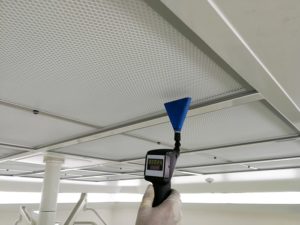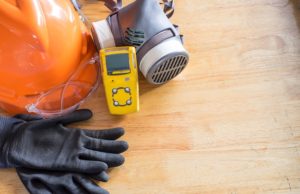It doesn’t jump to mind immediately or obviously but using your gas-detection equipment correctly is a lot like sportfishing. You must have proper technique, the right equipment, and both knowledge and experience in order to be successful. In both, if you lack in any of the three, you run the risk of failing.

The difference is, if you fail at fishing, you just go home empty-handed. If you fail to use your H2S gas monitor correctly, for example, you could cause an explosion or fire and possibly kill yourself or someone else. With gas-detection equipment, you must know how to use it correctly, and it has to work every time. Here are some pointers on using your equipment correctly.
Technique
Not using proper technique when operating gas-detection equipment can render it useless. For instance, if you are looking for propane fumes around your ceiling, you won’t be successful because propane is heavier than air, and it sinks. You need to know the behavior of the gas you are looking for and cater your technique to fit that gas. If you are doing a general scan, you have to remember to scan constantly high and low, so you cover all the possible properties gas can exhibit.
You also can’t rush. The sensors in your H2S gas detector, for example, will take a few seconds to process the surroundings and detect dangerous gas. If your detector is equipped with electrochemical sensors, that processing time can take up to a minute. Rushing can make you miss a reading, or worse, miss a pocket of deadly gas. If you’re in a confined space to monitor H2S gas and using attached hoses, response time will be delayed even more. It’s a good idea to add a second of delay to every five feet of hose.
Equipment

Gas-detection equipment has come a long way since even a few decades ago. Some detection equipment can check for evidence of just about every chemical down to the part-per-billion level. It also uses chromatography and spectrometry to help pinpoint gas presence, quantities, and sources.
With all the new technology, however, it is easy to overlook the old, reliable equipment that was simple and cost-effective. For instance, pH paper and handheld H2S detectors can be just as reliable as the newer, flashier electronics. Knowing what to use when is key to effective gas monitoring.
Operating the Equipment Properly
Part of using the equipment properly is to approach the hot zone correctly. That means sticking to criteria in terms of gas detection order. That order should be:
- Gamma radiation from a distance
- Corrosive gases, including during the approach
- Oxygen levels
- Flammable gas
- Toxic gas
Most detection equipment will monitor for several of these simultaneously. Some can monitor for all of them at once. In some cases, however, detection equipment is for single-component detection; a good example of that is a gas detector for H2S.
Analysis and Follow-up
Because of the delay in interpretation, those using gas-detection equipment can tend to disregard the results unless they are crystal clear. This is a mistake. Sensors can take a while to accurately measure, and disregarding an alert can have deadly consequences. When you analyze the results, err on the side of caution; don’t choose to ignore a result just because it makes no sense. Follow up on it and make sure the result is accurate.
Monitoring for deadly gas and vapors can take time—just like fishing. If, however, you are patient and stress competency, you can ensure your workplace is safe and gas-free. For more information, check out DOD Technologies, Inc.






